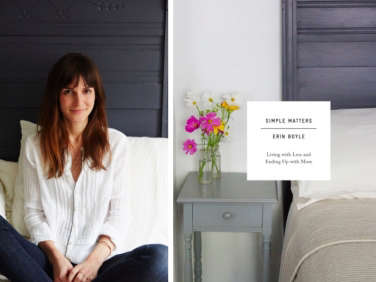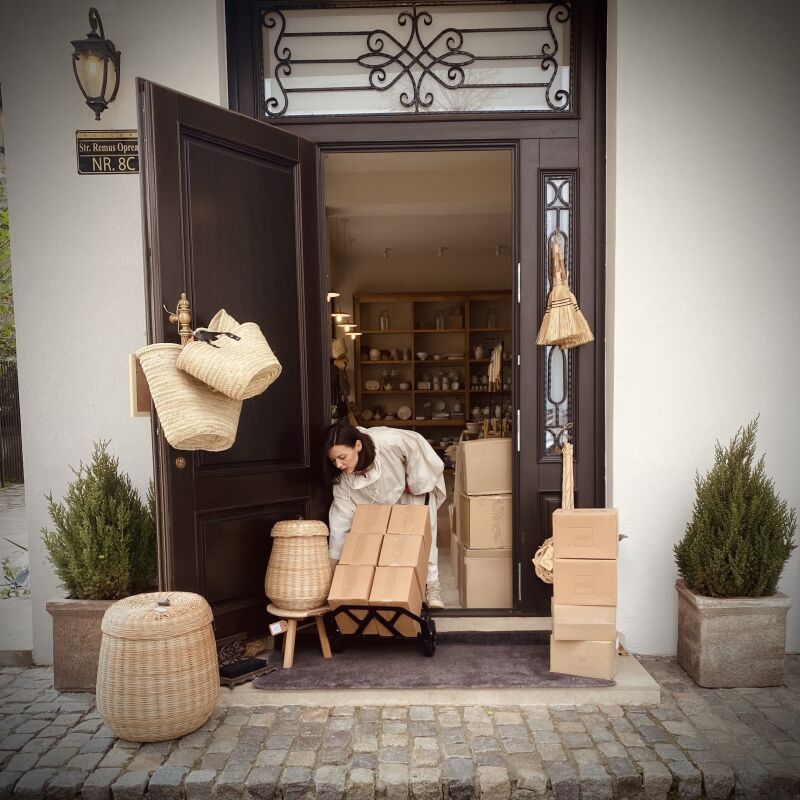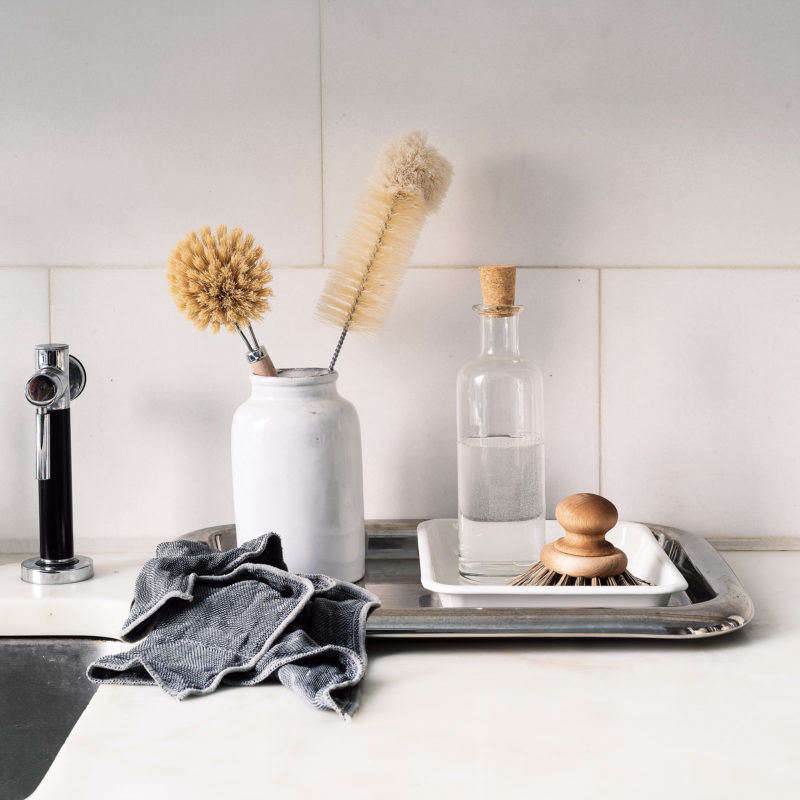Open an under-the-sink cabinet and you’ll likely find a hodgepodge of half-empty plastic bottles: countertop sprays, floor cleaners, shower cleaners, and more. Do you really need all these products? In our opinion, the answer is no. Embrace a simpler approach and banish the single-purpose cleaning supplies; the result is less clutter, fewer chemicals, and a home that’s every bit as clean as you’d like it to be.
I like to keep a few hardworking ingredients on hand: castile soap, tea tree oil, white vinegar, baking soda, and coconut oil, which I mix and match to create natural cleaning formulas. Here are three effective cleaning recipes that I stand by.
Photography by Erin Boyle from Simple Matters.

Above: I keep my cleaning supplies and products limited to what fits in a wire mesh basket that I stow under my sink, including a glass spray bottle filled with an all-purpose solution of castile soap, water, and tea tree oil (recipe below).
1. All-Purpose Cleaner
Above: I use my all-purpose cleaner—made with tea tree oil (shown in the small bottle)—everywhere.
I attach a standard spray nozzle to an old glass vinegar bottle. Fill it with a few tablespoons of castile soap (a 16-ounce bottle of unscented Dr. Bronner’s Castile Soap is $10.99 from Dr. Bronner’s), 10 drops or so of tea tree oil (a 4-ounce bottle of Tea Tree Oil is $12.45 from Amazon), and enough water to top it off. I use it for everything from wiping down counters and sinks to cleaning up spills.
2. Stainless Steel Polish
Above: A 14-ounce jar of Nutiva Coconut Oil is $15.98 from Amazon.
Anyone with stainless appliances knows that it takes some work to keep them gleaming. There are lots of products on the market for this purpose, but a teaspoon of coconut oil is by far the cheapest, easiest, and most effective. Use a clean rag to apply a small amount of coconut oil directly to the steel. Work the oil into the appliance until streaks and stains disappear. Give a last wipe down with an oil-free rag and step back to admire the gleam.
3. Sticky Residue Remover

Above: Oil plus an abrasive makes an ideal sticky residue remover: Just mix coconut oil with baking soda.
I’ve spent more time than I care to admit scraping off the last bits of label gunk on glass jars or bottles I plan to repurpose. Here’s my solution: Mix together equal parts baking soda and coconut oil to form a thick paste. Apply directly to the sticky mess and rub with a warm rag until the residue slips away.
Above: Gardenista contributor Erin Boyle is the author of the newly released Simple Matters, available from Amazon for $13.66. N.B. If you’re in LA, Erin is signing books today, March 4, in Venice at Cuyana Store, and tomorrow, March 5, at The Springs in DTLA. Details on her books page.










Have a Question or Comment About This Post?
Join the conversation (11)